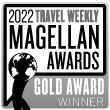Latest News
Wednesday, 11th June 2014
In General Japan News,
Hiroshima increasingly popular with tourists
The Japanese city of Hiroshima may have been devastated by the atomic bomb almost 70 years ago, but today, this site of the destruction is one of the top tourist destinations in the entire country.
Statistics released by the nation's tourist agency revealed that around 363,000 visitors went to the metropolis during 2012, with US citizens making up the vast majority of that figure, followed by Australians and the Chinese.
And the number appears to be climbing, according to the Japan Times. Local officials confirm that the memorial site is attracting more tourists keen to explore the burnt wreckage, which is all that remains of the city's buildings at Ground Zero.
They are also fascinated by the painful witness testimonies and human shadows left permanently visible upon the walls of the constructs where people were instantly obliterated by the blast.
Officials claim promotion activities from the local authorities and tourism attractions have helped to inspire a greater number of foreign tourists to come to the site.
Visitor figures to the Hiroshima Peace Memorial Museum by foreign tourists hit a record high of 200,086 in 2013, with foreign tourists describing the site as a gripping, educational and emotional example of "dark tourism," "grief tourism" or "battlefield tourism".
Such sites are popular around the world, and include Nazi concentration camps in Europe, Cambodia's torture prison and killing fields, West African slave ports and Manhattan’s 9/11 crater.
The fascination with Hiroshima has resulted in the Peace Memorial being named one of the top must-see attractions by popular review website Tripadvisor.
Hiroshima Convention and Visitors Bureau representative Taeko Abe told CNN upon hearing the news: "The name 'Hiroshima' has been well-known among foreign countries from its history, and recently word-of-mouth effect from visitors adds more reality to it.
"In recent years, word-of-mouth information from [the] internet and so on also has a strong influence," he added.
The site has also received recognition from Japanese prime minister Shinzo Abe, who praised its strong message of peace and proclaimed it to be something the entire human race can learn from.
"Hiroshima City has achieved a remarkable recovery from that devastation, although the first atomic bomb in history was dropped on Hiroshima in 1945, and has pursued everlasting world peace for mankind," he said.
"Visitors say they feel its most powerful message, that of hope, and appreciate anew the importance of peace."
As well as the museum itself, tourists also pause to think over the iconic Atomic Bomb Genbaku Dome, which marks the space where the weapon detonated.
The skeleton-like ruins that stand today have been declared a UNESCO World Heritage site and are viewed by thousands of tourists every month. Other blistered artefacts from the time that hint at the horror include a child's tricycle that was being ridden by a four-year-old boy at the time of the explosion, broken Buddha statues and charred clothing.
Related news stories:
Aso speaks of leadership credentials (2nd September 2008)
Obama's paper cranes to go on display at Hiroshima (8th June 2016)
Hiroshima to reinforce A-bomb dome (27th January 2014)
Japan remembers the Hiroshima atomic bombing 70 years on (6th August 2015)
 UK
UK
 Australia
Australia
 Inside Japan UK office
Inside Japan UK office Inside Japan US office
Inside Japan US office Inside Japan Australia office
Inside Japan Australia office Inside Japan - Japan office
Inside Japan - Japan office



























